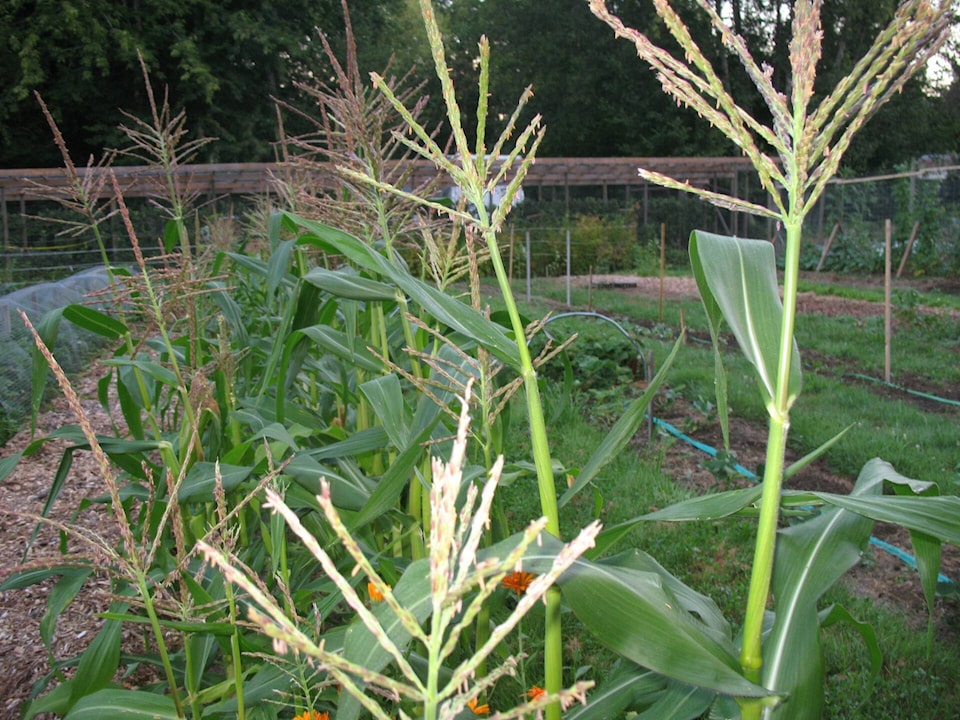Many gardening writers insist we shouldn’t grow corn in a small garden, that corn must be grown in decent sized patches in order for good pollination of the ears and that the plants require a lot of room above and below ground, but I’ve had success in small gardens.
Today’s commercially available “peaches and cream” corn is an insipid, extra sweet hybrid developed to allow longer shelf life at the expense of flavour and texture.
Modern consumers have become accustomed to this because old fashioned varieties like “golden bantam” are simply not available unless you grow your own.
The difference between past and present makes it worth our while to ignore the experts. Even when my garden was smaller I taught myself how to grow decent cobs on just a few plants: once the tassels form at the top, I regularly shake the plants so the pollen falls off the tassels and pollinates the silks on the ears. Even now that I have two long rows of corn, I go along and give each plant an encouraging nudge and get at least one good ear per plant.
Evidently humans aren’t the only species that enjoys corn; bees have been pollinating flowers at the top lately, and I’ve read that earwigs and raccoons love the silks and ears of corn. I guess the use of soaker hoses deters earwigs that don’t like crawling over dry soil to reach the plants, and raccoons don’t crawl through a protective barrier of squash meandering among the stalks that I usually grow with the corn.
Corn cross-breeds readily among varieties, so either grow them at least a hundred feet (thirty metres) apart, grow only one variety per year, or grow them at different times so they don’t cross breed.
If you want to try cross breeding, then don’t keep them separate. I did this one year with “golden bantam” and “sunnyvee” varieties and produced a great tasting cob that’s larger than the heritage golden bantam.
Since corn grows best in rich soil, I sow the seed in a bed that had a cover crop over the winter that I dig under along with a quarter inch (6 mm) of compost and organic fertilizer at the rate of four litres per hundred square feet (ten square metres). Then I pull a hoe along to make a two inch deep furrow (5 cm) and push each seed into the furrow about another inch deep (2.5 cm). This year I sowed each seed one foot apart (30 cm) in rows two feet apart (60 cm). I covered the whole bed with Reemay to keep out the ubiquitous crows, and once the seedlings were about three inches high I removed the Reemay and pushed the soil back in to fill the furrows. Then I laid two soaker hoses down the length of the rows and set them to water for half an hour every three days.
I planted my golden bantam/sunnyvee cross again this year, but next year I’m going to plant a dent or flint variety as well because these types make better cornmeal and flour. When I’ve dried and ground my corn, the resulting meal and flour made a chewy product that stuck to my teeth, so I won’t bother trying that again.
But I digress.
The garden writers who recommend against growing corn in small gardens overlook the flaws in our food delivery system. If you want real corn you have to grow your own, wherever you can. David and I were charmed to find it as part of the ornamental garden at the Saskatchewan Legislature.
